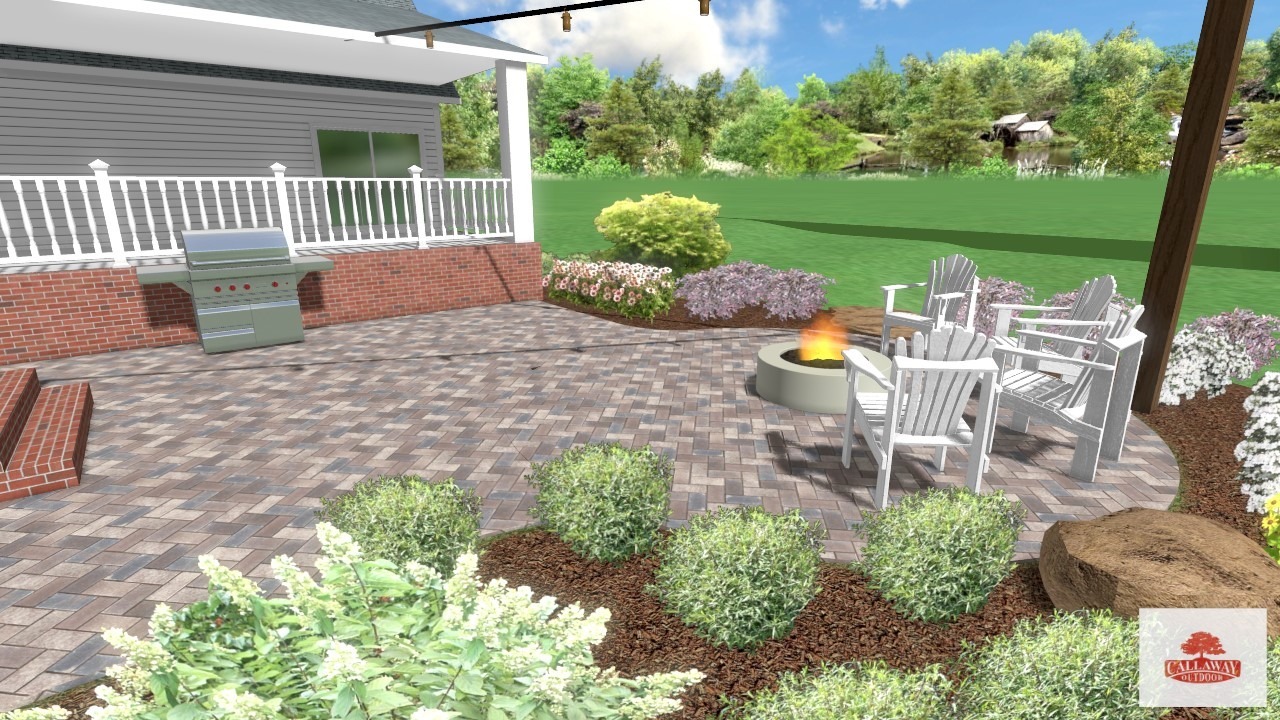
Patio design and installation
A beautiful patio can provide a sanctuary in your backyard, a space where you can relax, entertain guests, and enjoy the outdoors. Patio design and installation require careful planning and consideration to create a space that suits your needs and complements your home. In this article, we will explore the basics of patio design, the steps involved in designing and installing a patio, as well as tips for maintaining your patio and avoiding common mistakes. So let’s dive in and find out how you can create the perfect patio for your outdoor space.
Understanding the Basics of Patio Design
When it comes to patio design, understanding the basics is essential. A patio is an outdoor area that is typically paved and used for dining, relaxation, or entertainment purposes. It is an extension of your home and should be designed to enhance your outdoor living experience. The layout, materials, and design elements all play a crucial role in creating a functional and visually appealing patio.
Creating a patio that suits your lifestyle and complements your home requires careful consideration of various factors. From the overall design concept to the choice of materials, every decision contributes to the final result. Let’s delve deeper into the importance of patio design and explore the key elements that make a patio truly exceptional.
Importance of Patio Design
The design of your patio is important for several reasons. Firstly, it determines the overall look and feel of the space. Whether you prefer a sleek and modern design or a more rustic and natural feel, the design will set the tone for your patio. By incorporating elements that reflect your personal style and preferences, you can create a patio that feels like an extension of your indoor living space.
Secondly, a well-designed patio can increase the value of your home and improve its curb appeal. Potential buyers are often drawn to properties with well-designed outdoor spaces, as they offer additional areas for relaxation and entertainment. A thoughtfully designed patio can make your home stand out in the real estate market and potentially fetch a higher selling price.
Lastly, good patio design ensures that the space is functional and meets your specific needs. Whether you envision a cozy nook for morning coffee or a spacious area for hosting gatherings, the design should accommodate your lifestyle. By carefully planning the layout and considering the intended use of the patio, you can create a space that seamlessly integrates with your daily routine.
Key Elements in Patio Design
There are several key elements to consider when designing your patio. These include the layout, size, shape, and materials used.
The layout of your patio should take into account factors such as the available space, the main purpose of the patio, and how it will connect with the rest of your outdoor area. A well-designed layout ensures that the patio flows smoothly with the surrounding landscape and provides easy access to other outdoor features, such as gardens or swimming pools.
The size and shape of your patio will depend on your preferences and the available space. A small, intimate patio may be perfect for a couple looking for a private retreat, while a larger patio can accommodate larger gatherings and outdoor activities. The shape of the patio can be influenced by the existing architecture of your home or your desire for a unique and eye-catching design.
Lastly, the choice of materials will impact the durability, aesthetics, and maintenance requirements of your patio. From classic options like concrete and brick to more contemporary choices like composite decking or natural stone, there is a wide range of materials to choose from. Consider factors such as climate, maintenance needs, and desired aesthetic to select the best material for your patio.
When designing your patio, it’s important to strike a balance between functionality and aesthetics. By understanding the basics of patio design and carefully considering the key elements, you can create a patio that not only enhances your outdoor living experience but also adds value to your home.
Steps in Designing Your Patio
Designing your patio involves several steps that will ensure the success of your project. By following these steps, you can create a patio that not only looks great but also functions well.
Planning Your Patio Layout
The first step in designing your patio is to plan the layout. Consider how you will use the space and what features you want to include. Will you have a seating area? Do you want to integrate a fire pit or a barbecue? Understanding your needs will help you create a layout that maximizes the space and allows for easy movement and functionality.
When planning your patio layout, it’s important to consider the orientation of the space. Take into account the position of the sun throughout the day to determine the best placement for shade structures or sun umbrellas. You may also want to consider the surrounding landscape and how your patio can complement it. For example, if you have a beautiful garden, you might want to design your patio to have a seamless transition into the greenery.
Another factor to consider when planning your patio layout is the privacy of the space. Depending on your preferences, you may want to incorporate elements such as tall hedges, fences, or pergolas to create a more secluded and intimate atmosphere.
Choosing Your Patio Materials
Once you have a layout in mind, it’s time to choose the materials for your patio. There are many options available, including concrete, pavers, natural stone, and wood. Each material has its own set of advantages and considerations.
Concrete is a popular choice for patios due to its durability and versatility. It can be poured into any shape or size, allowing you to create custom designs. Additionally, concrete can be stained or stamped to mimic the appearance of more expensive materials like stone or brick.
Pavers offer another great option for patio materials. They come in a variety of shapes, sizes, and colors, allowing you to create unique patterns and designs. Pavers are also easy to install and replace, making them a practical choice for DIY enthusiasts.
If you’re looking for a more natural and timeless look, consider using natural stone for your patio. Stone materials like flagstone, slate, or limestone can add a touch of elegance and sophistication to your outdoor space. Keep in mind that natural stone requires regular maintenance to prevent staining and ensure its longevity.
For those who prefer a warm and inviting atmosphere, wood is an excellent choice for patio materials. Wood decks or patio flooring can create a cozy and rustic feel, perfect for outdoor gatherings or relaxation. However, it’s important to choose a wood species that is suitable for outdoor use and to apply protective sealants to prevent rot and decay.
When choosing your patio materials, take into consideration your budget, maintenance requirements, and desired aesthetic. It’s also a good idea to visit local home improvement stores or consult with professionals to see samples of different materials and get expert advice on what will work best for your specific needs.
Patio Installation Process
Now that you have designed your patio, it’s time to move on to the installation process. Proper installation is crucial for the long-term durability and functionality of your patio.
Preparing the Ground for Patio Installation
Before installing your patio, you need to prepare the ground properly. This involves clearing the area of any debris, leveling the ground, and ensuring proper drainage. The ground should be compacted to create a stable base for your patio.
Laying the Patio Foundation
Once the ground is prepared, you can begin laying the foundation for your patio. This typically involves creating a base layer of gravel or crushed stone and compacting it to provide stability. The foundation acts as a solid base for the patio materials and helps prevent shifting or sinking over time.
Maintaining Your Patio
To ensure that your patio remains in good condition and continues to enhance your outdoor space, regular maintenance is required. Here are some tips to help you keep your patio looking its best.
Regular Cleaning and Maintenance Tips
Regular cleaning is essential to remove dirt, debris, and stains from your patio surface. Sweep or hose down the patio regularly to prevent the buildup of dirt and leaves. For stubborn stains, use a mild detergent or a specialized cleaner recommended for your patio material.
Seasonal Patio Care
Seasonal care is necessary to protect your patio from the elements and extend its lifespan. In colder climates, it is important to remove snow and ice promptly to prevent damage. Using a sealant on your patio surface can also help protect it from moisture and weathering.
Common Mistakes in Patio Design and Installation
Even with careful planning, mistakes can still occur during the patio design and installation process. Being aware of these common pitfalls can help you avoid them and ensure a successful project.
Avoiding Design Flaws
Design flaws can stem from poor planning or a lack of understanding of your needs and requirements. Common design mistakes include inadequate space for furniture, poor lighting, and lack of privacy. Taking the time to carefully consider your design and seek professional advice if needed will help you avoid these pitfalls.
Preventing Installation Errors
During the installation process, errors can occur that may compromise the integrity of your patio. These can include improper base preparation, incorrect installation of materials, or poor drainage. Hiring experienced professionals or following detailed installation guides can help prevent these errors.
In conclusion, patio design and installation require careful planning, attention to detail, and a clear understanding of your needs. By following the steps outlined in this article and avoiding common mistakes, you can create a stunning patio that enhances your outdoor living space for years to come. So start planning your patio design today and enjoy the benefits of a beautiful and functional outdoor area.
